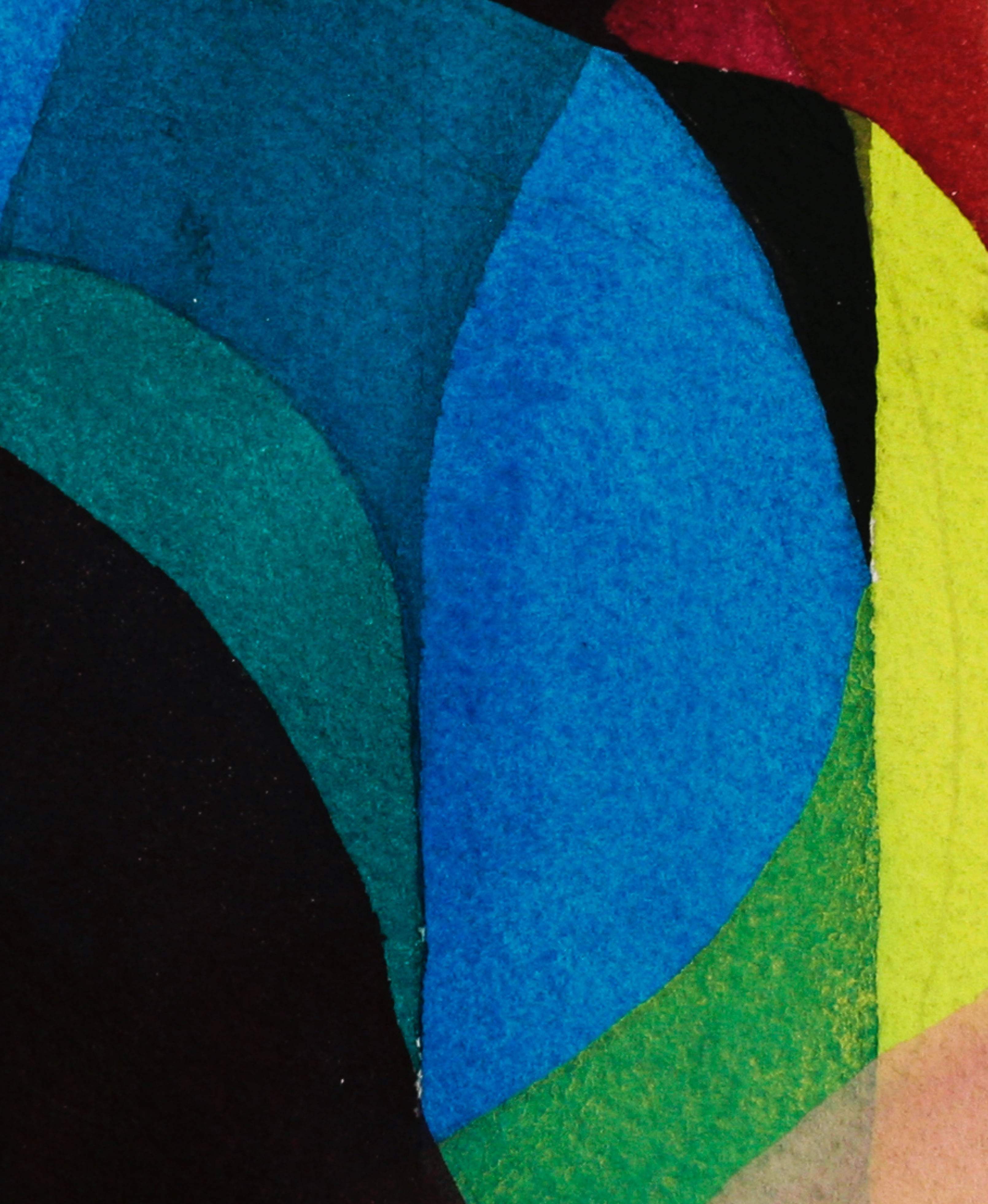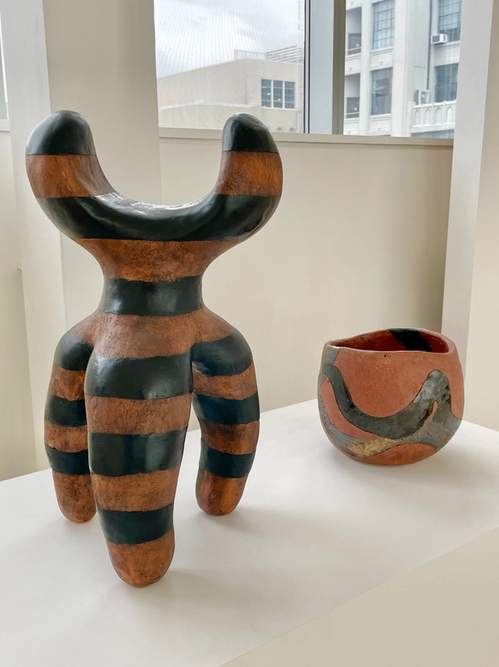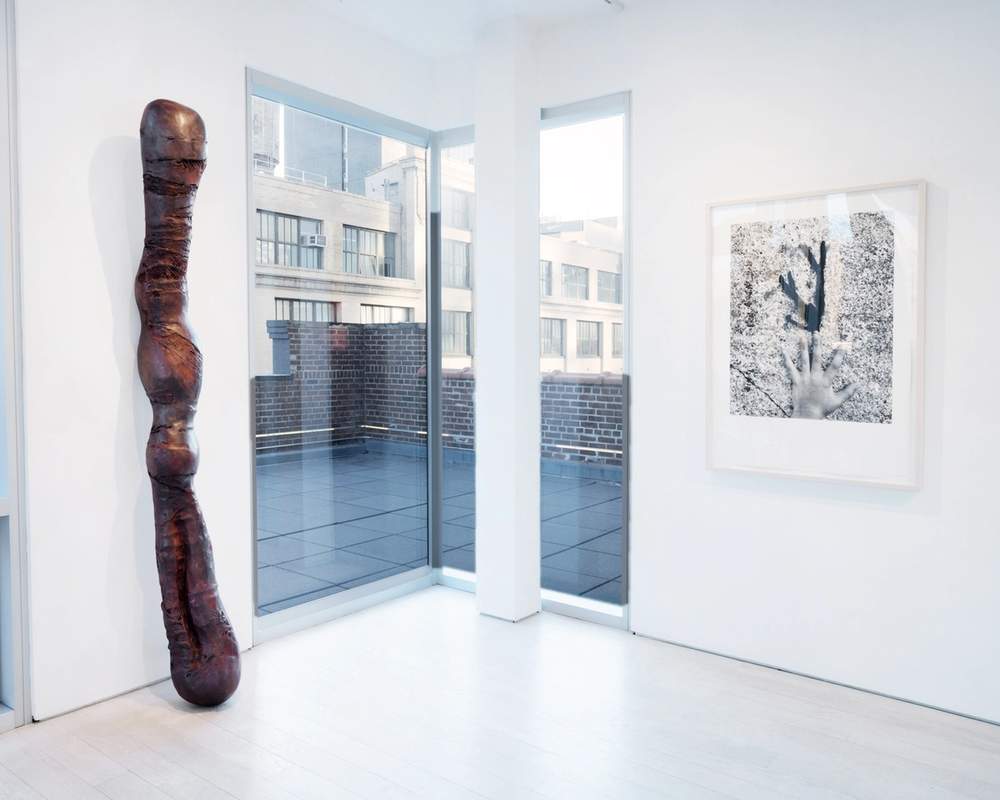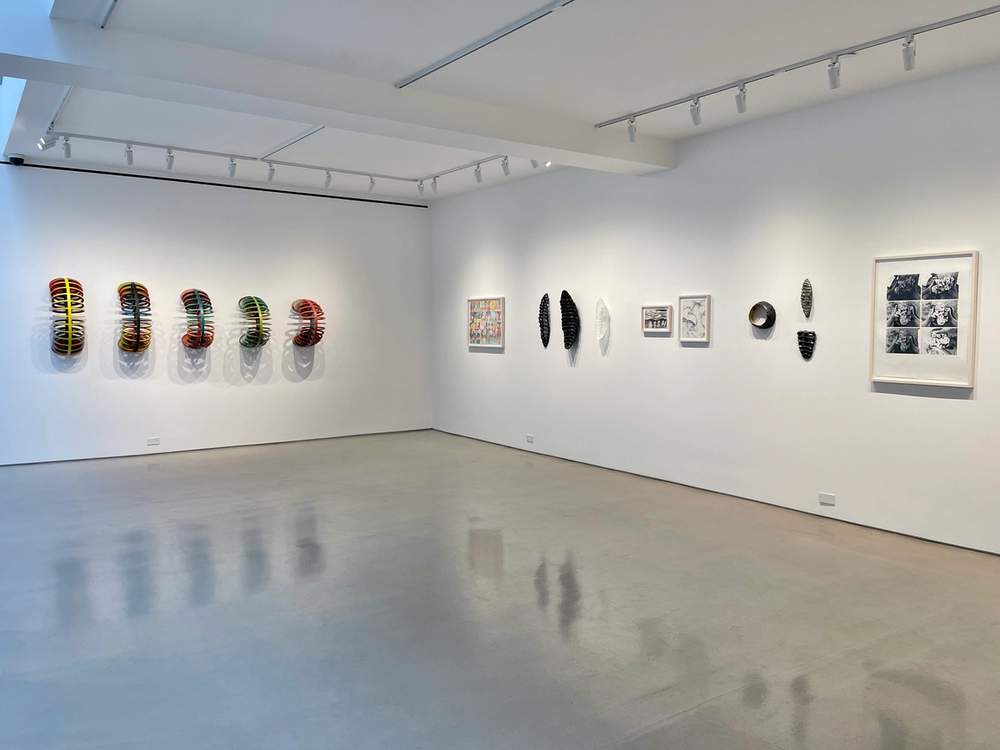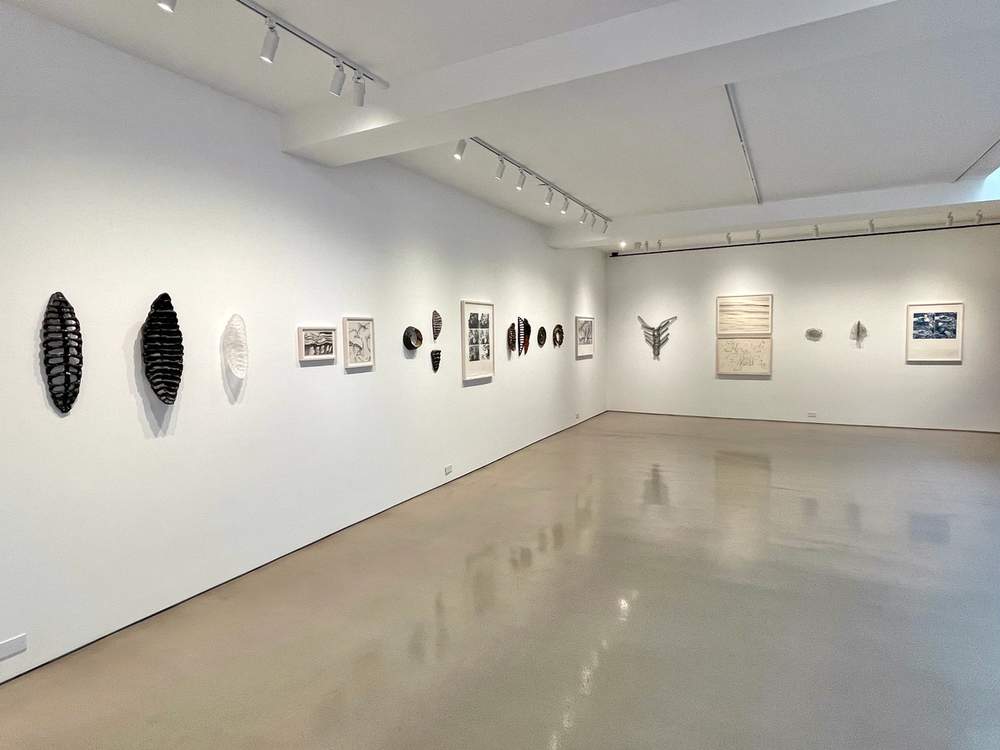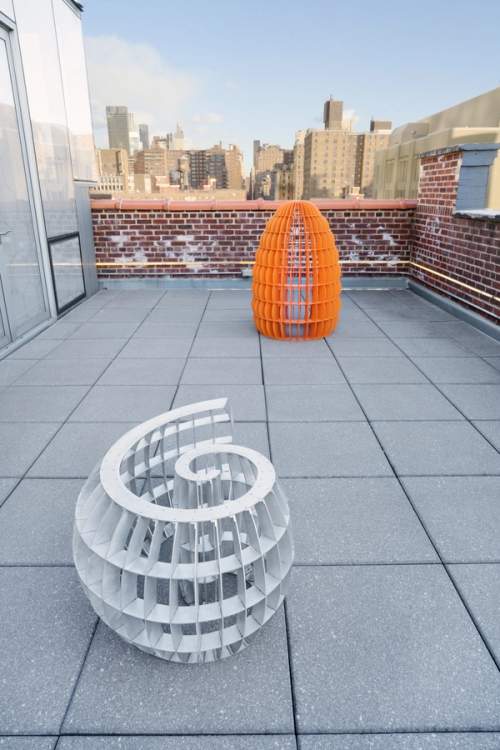- Exhibition Title
- Eve Biddle | Mary Ann Unger: Generation
- Show Type
- Group
- Curator
- Ylinka Barotto
- Venue
- Davidson Gallery
- Year
- 2023
- Location
- New York, NY
Eve Biddle | Mary Ann Unger: Generation
Eve Biddle | Mary Ann Unger: Generation
Curated by Ylinka Barotto
January 12 – February 19, 2023
Davidson Gallery
521 W 26th St.
NYC 10001
Davidson Gallery is delighted to present Eve Biddle | Mary Ann Unger: Generation, a two-person exhibition by American artists Mary Ann Unger (b. 1945, New York; d. 1998, New York) and her daughter, Eve Biddle (b. 1982, New York).
Following Mary Ann Unger's acclaimed first US retrospective at the Williams College Museum of Art, this exhibition at Davidson Gallery features a selection of works by both Unger and Biddle, marking the first comprehensive gallery presentation of Biddle's work and the third exhibition of Unger’s since the gallery's representation of the estate in 2011. While highlighting the artists' distinctive practices in sculpture, drawing, and printmaking, Generation celebrates the creative and aesthetic dialogues that stemmed from their intimate and potent familial ties as mother and daughter.
In her large-scale sculptures, outdoor works, and intricate drawings, Unger coalesced the questfor the geometric and the organic, producing a constellation of linear forms and developed an investigation of the evolution of shapes. A graduate of Columbia University, Unger worked in New York from the late 1970s until her untimely death in 1998. An artist, writer, and curator, Unger treated the body, bones, and flesh as a matter of study, conveying the harmony, trauma, and the viscerality therein. The influences of Unger on Biddle’s practice are profound and ineluctable. Moving seamlessly between sculpture and printmaking, Biddle focuses on nature often highlighting process-making with visible handprints used as sculptural patterns. Exploring seriality and materiality, Biddle’s sculptures, and the subjects of her photographs, resemble archeological artifacts that relay a personal account of the past and present. Installed on the two gallery floors and the outdoor terrace, and with over 30 works spanning sculptures, prints, and works on paper – some of which were made near the end of Unger’s life and have never been exhibited before - Generation celebrates the shared language and the vocabularies common to both artists’ practices and is a tribute to generational traditions and creative processes. Generation is on view from January 12 to February 18, 2023.
NINTH FLOOR
Interested in the materiality and visual strength of natural elements, Biddle developed a series of prints featuring kelp, stones, and minerals that she began to photograph during her travels as a way to record the passage of time. Often framing her son’s and daughter’s hands, or using the natural elements as an extension of the human body, Biddle uses personal experiences as points of departure to speak about universal concepts of human growth. Biddle’s ceramics and works in glass from the series New Relics (2019-ongoing) reinstate her interest in the natural world. Shapes inspired by animal fossils from an ancient era, bones, spines, and concentric circles that mimic the movement of water on the shore serve as the main subjects. The artist’s ongoing focus revolves around voids and volumes rendered through the repetition of forms, a variety of dimensions, and the use of different patinas. Hovering between the animal and human, the works are a testament to the slow mutability of natural elements, evolution, and extinction.
Throughout the three decades of her career, Unger oscillated between the geometric and the biomorphic which she explored in both her drawings and sculptures in wood, iron, and hydrocal, a material obtained by combining multiple layers of wet plaster. The early works on paper and sculptures on view on this floor speak to that tension between the orderly, almost mathematical approach and the more visceral, body-like creations. The wire mesh of the knot-like sculpture Untitled (1975) is indicative of the process that Unger developed for her later work: a metal frame skeleton that served as a substructure for gauze, paint, and graphite, such as Talking Stick (1996-97), on view on the tenth floor. The colorful Vertebrae (1983), that protrudes from the wall in a dynamic expansion of forms, uses the human body as a point of departure to create a mesmerizing cascade of pigmented hues. Almost lenticular in its appearance, the work seems to invite the viewer into a chromatic dance of sorts.
TENTH FLOOR
The investigation of body parts is ongoing in Unger's practice which she rendered in knurled structures such as Benchmarks (1977) and Talking Stick (1996-97). While the former is comprised of overlapping forms entangled as though in a human embrace, the latter reveals the stratification of materials, recalling a healing body where parts of gauze are apparent through the surface. Hoist (1994) and Untitled (1994), are likely related to Across the Bering Strait (1992-94) a monumental work consisting of over 30 elements that reference the forced migratory movements of generations of people, including her own Jewish ancestors. Hoist, like Benchmarks, uses shapes reminiscent of bones and joints to suggest an almost symbiotic or dependent relationship between figures. The watercolors (1995-97) which have never been exhibited before, emphasize Unger’s impressive control of line and color, while also continuing her explorations of more bulbous, rhizomatic elements. Molecular shapes, tree trunks, and fruits populate the drawings creating a dreamlike landscape. Concluding the exhibition is Supplicant (1985), which eschews pure abstraction in favor of a transfixed figure with four abnormally elongated breasts, irregular wings, and a bald head tilted back in an agonized cry. Created shortly after Unger’s first cancer diagnosis, the pale, scarified surface and raw emotion reference the betrayal by the body and the powerlessness against the inexorability of time
OUTDOOR TERRACE
Unger worked extensively with outdoor sculptures and public commissions for institutions and university campuses, including Lehigh University Art Galleries and Queens College, City University of New York, and accompanied her works with meticulous architectural drawings, plans, and maquettes. Unfurling (1996), and Beehive Temple (1987) are exemplary of the larger pieces in which geometric forms converse with the surroundings. Like drawings in open-air, these, as well as most of her other public works, feature repeating lines and geometric forms alternated with voids conveying an organic dialogue with nature. In the past decade, Biddle has developed an outdoor practice that involves monumental murals across New York City and the US. Most recently, she was involved in the restoration of Queens is the Future in Jackson Heights, NY. Both Biddle and Unger extended their practices across the fine arts including curatorial work and community-based activities. In the 1980s, Unger curated multiple exhibitions including at The Sculpture Center. Likewise, Biddle’s practice involves the Wassaic Project artist residency that she co-founded in 2008 and which has brought together over 45,000 artists, curators, and art professionals to date.
About the Artists
Eve Biddle is an artist and a co-founder of the Wassaic Project, an artist residency located in Wassaic, New York. With her co-founders, she has curated performances at MASS MoCA and participated in many public speaking engagements including at The Aldrich Museum, Art Omi, Bard College, Columbia University, Parsons School of Design, School of Visual Arts, and Storm King, amongst others. She lives and works between Wassaic and New York City.
Mary Ann Unger's work is included in numerous private and public collections, including the Whitney Museum of American Art, the Art Institute of Chicago, the Hirshhorn Museum and Sculpture Garden, the Brooklyn Museum, the Philadelphia Museum of Art, and the Albright-Knox Art Gallery. Her outdoor works are on permanent view at The Fields Sculpture Park at Art Omi, the Philip and Muriel Berman Sculpture Gardens at Lehigh University, and the Aaron Copland School of Music at Queens College, among many other institutions. Unger’s works have been reviewed in publications including Art in America, Artforum, Frieze Magazine, The New York Times, and Sculpture Magazine.
About the Curator
Ylinka Barotto is a curator and art professional who has previously worked at the Moody Center for the Arts at Rice University and the Solomon R. Guggenheim Museum. At the Moody, she organized exhibitions and performances with national and international artists notably: Li E. Harris; Jasmine Hearn; Baseera Khan; Kapwani Kiwanga; Sondra Perry; Kameelah Janan Rasheed; Edra Soto; Clarissa Tossin, and Charisse Pearlina Weston amongst others. Barotto was also involved in the expansion of Rice Public Art through acquisitions and commissions. At the Guggenheim, Barotto worked on modern and postwar retrospectives as well as contemporary exhibitions and contributed to shaping and diversifying the Guggenheim’s permanent collection through acquisitions of emerging artists.
